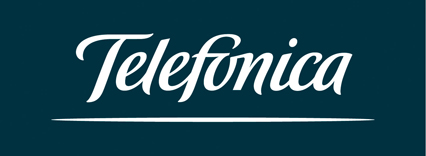- Germany will be the first country in the Telefónica Group to launch a device with an eSIM card, the Samsung Gear S2 Classic 3G, in the second quarter of this year.
- In the demos performed on the stand, you can see how mobile subscriptions for different operators in the world are delivered remotely to different devices and through the remote SIM card management platforms of various manufacturers.
Barcelona, 23 February 2016. At the MWC in Barcelona, which is being held from 22 to 25 February, Telefónica is exhibiting a variety of eSIM card use cases for different types of consumer devices, including wearables. As defined by the GSMA in collaboration with global operators and manufacturers of handsets and SIM cards, these will be the first to reach the market in the case of Telefónica, and in particular in Germany, with the marketing of the Samsung Gear S2 Classic 3G with eSIM card, in the second quarter of the year.
Telefónica firmly believes in the capacity of eSIM cards to act as a catalyst to provide connectivity to the next billion of connected devices that are expected due to the rapid growth of the ‘Internet of Things’. For this massification of devices connected to mobile networks to take place; however, there needs to be a fully interoperable and secure standard, in order to ensure a frictionless experience with full freedom of choice for consumers.
According to Francisco José Montalvo, Director of the Global Handset Unit of Telefónica S.A, “One of Telefónica’s main objectives in supporting this initiative is to maintain the same levels of integrity, security and reliability that SIM cards provide, as secure pieces of hardware that protect and guarantee customer privacy, with this new eSIM card standard.”
As a result of this work, Telefonica has been defining consumer market-oriented applications in which customers have a high degree of independence from operators, device manufacturers or the suppliers of the SIM cards embedded in these devices. With regard to these use cases, which are available at the stand, visitors can experience a guided end-to-end demonstration of the process of downloading a mobile subscription using different devices, whether it be a point of sale download or a case of the customer doing so autonomously.
There will be a clear demonstration of how mobile subscriptions are delivered remotely to devices from different operators around the world: Chile (Movistar), China (China Unicom), Spain (Movistar), England (O2 UK), Peru (Movistar) and Qatar (Ooredoo), using Alcatel Onetouch, Huawei, LG, Samsung and Sony Mobile devices via the following remote SIM card management platforms: Gisecke & Devrient, Oberthur Technologies and Valid, using Gemalto, Giesecke & Devrient, Oberthur Technologies and Valid eSIM cards.
A Joint Effort by the Industry as a Whole
In December 2015, a group made up of operators, SIM card and devices manufacturers completed the definition of the first phase of the eSIM card standard that will enable customers to connect devices which are equipped with this technology securely, quickly and in an interoperable manner, while always retaining the freedom to choose the carrier, as is currently the case. The working group focused on the definition of a technical specification for interoperability regardless of the operator, the card manufacturer, the handset manufacturer or the supplier of the remote eSIM management platform.
“This is the only universal, interoperable and global specification which has the support of the industry and which enables customers to make a connection with their devices to a mobile network, remotely, with a subscription. The new specification supports customers’ freedom of choice and continues with the evolution of the process of connecting new and innovative devices to the mobile network”, Alex Sinclair, Chief Technology Officer at GSMA, said.
